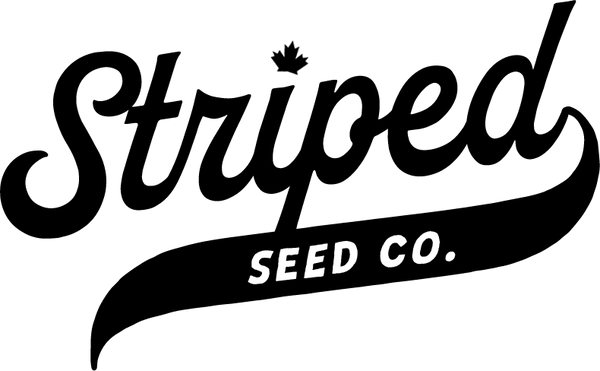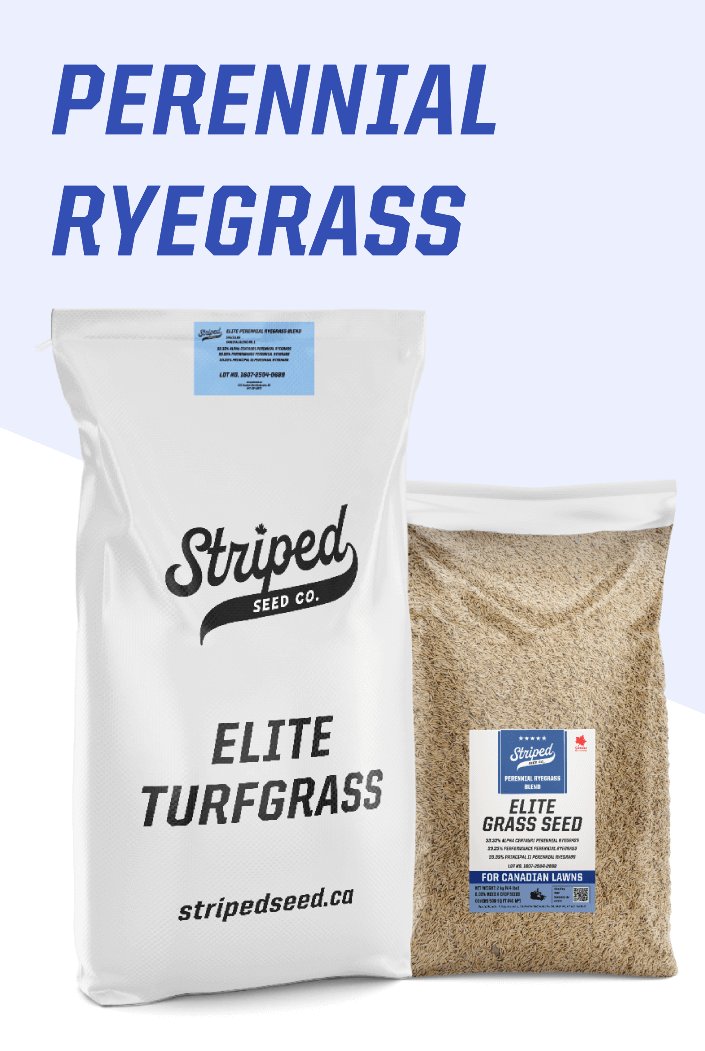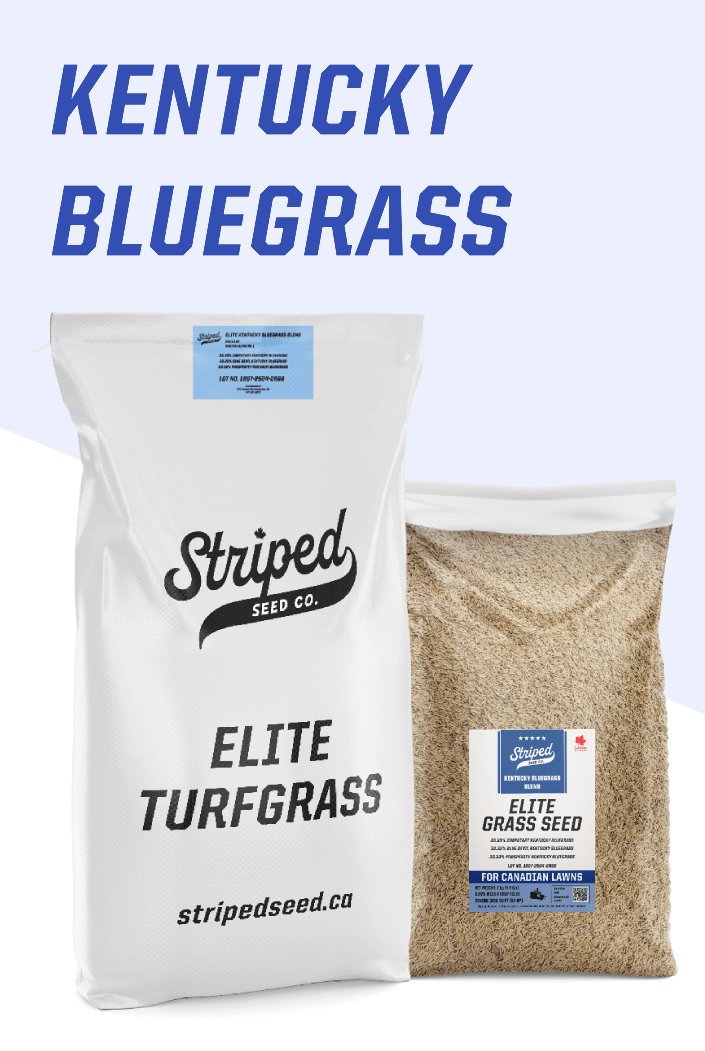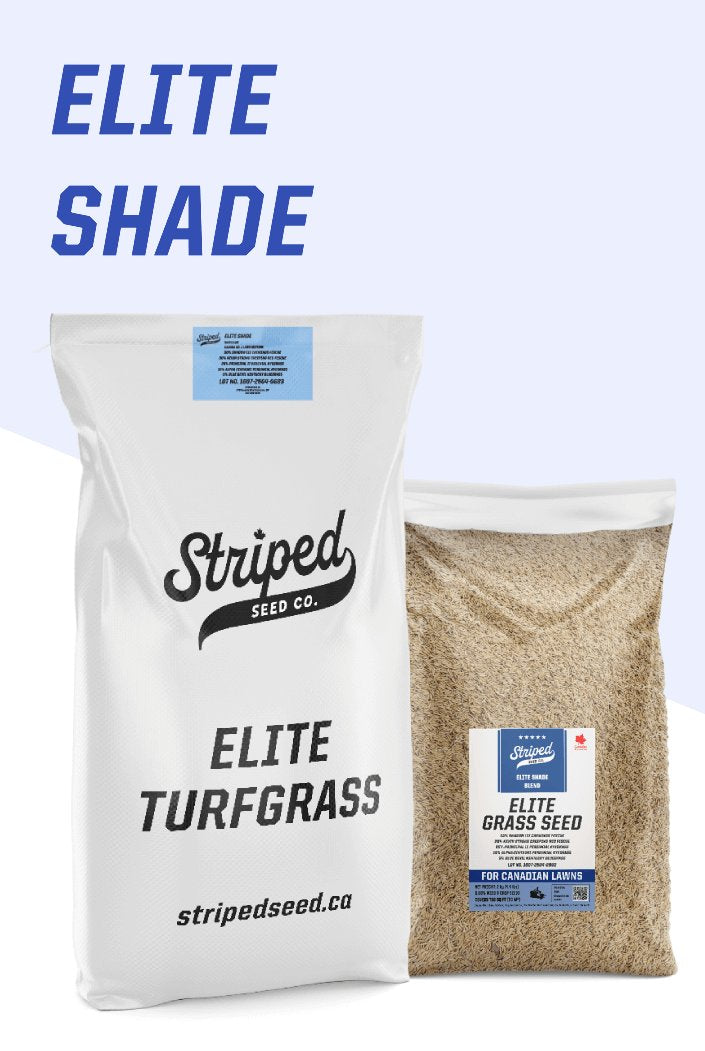This guide is meant to provide you with an easy decision framework for choosing a grass seed variety that will provide you with the best results and enjoyment for your particular situation. The decision can be straightforward and depend on situational factors like the time of year you’re seeding and whether you have an existing lawn, or involve more considerations if you are starting a new lawn from scratch.
| High-level general recommendation: If you’re seeding in the Spring and/or overseeding an existing lawn at any time of year, then we generally recommend sticking with perennial ryegrass (PRG). |
Which Grass Seed is Right for You?
The tables below can be used as a quick reference decision framework to help you choose the right grass seed and also what time of year you might want to plan your next seeding project
| Time of year when seeding | Recommendation |
| Spring | Perennial ryegrass |
| Late summer / fall | Ideal growing window for any grass variety |
| Existing lawn present? |
|
| Yes (overseeding) |
|
| No | Perennial ryegrass, Kentucky bluegrass, ryegrass/bluegrass blend If you’re starting a new lawn from scratch then you have a blank canvas and the ability to get good results with any grass variety. Planting a new lawn in late summer is ideal if you want to grow Kentucky bluegrass. |
| Sun exposure | Recommendation |
| Moderate to full sun | Any of our elite blends |
| Full shade or limited sunlight | Elite Shade blend |
| Grass variety type | Attributes |
| Perennial ryegrass | Germinates quickly (4-7 days) and establishes quickly making it ideal for overseeding existing lawns and spring seeding. Has a beautiful, emerald gloss and unrivaled sheen. A “clumping-type” grass that can thicken substantially but does not spread laterally via rhizomes. Therefore any large damaged areas may require reseeding (vs just watering, fertilizing, and mowing). |
| Kentucky bluegrass | Longer germination time (7-21 days) which requires more patience and increases the window for facing more challenges during germination period from things like rainstorm washout and animal damage. Best results with KGB come from using it to plant a new lawn in late summer/early fall. Has the ability to “self-repair” via rhizomes and stolons that tiller laterally and fill in areas over time. |
| Kentucky bluegrass / perennial ryegrass blend | An option that lets you enjoy the attributes of both KBG and PRG. Best for seeding new lawns but can be an overseeding option as well. Also an option for situations where you want some fast germination from the PRG to help mitigate chance and impact of rain washout (e.g. sloped areas). |
| Fescue | Fescues have come a long way from the coarse, straw-like varieties of the past and do well at both high and low heights of cut and in shaded areas. We currently offer two fescues as part of our Elite Shade blend. While our shade blend was curated to perform well in the shade, it also does well in sunlight. |
FAQ's
What if I don't know which variety of grass I have in my existing lawn? Will these grass seed blends match?
Historically, Kentucky Bluegrass was considered to offer the darkest green colour with other varieties being slightly lighter in colour. These days, the elite cultivars have come so far that they basically all offer a dark-green colour now with less disparity between varieties and cultivars. That's good news if you're buying a bag of seed with multiple grass varieties and cultivars in it because it means you'll have a uniform look in your lawn.
In terms of how it will blend with your existing lawn, that's harder to estimate as there are many factors at play. However, there are two good seeding windows each year - Spring and late-summer - and if you regularly overseed your lawn each time, you can achieve a uniform look in one season (maybe two at most).
If you don't know which variety of grass you have in your lawn currently, I wouldn't worry about it. Instead I would prioritize choosing the right seed based on the presence and condition of an existing lawn, what time of year you want to seed, how much sun exposure exists, and which attributes you want to optimize for.




